Abstract
Previous human studies demonstrated that lead exposure may modify the metabolism of catecholamines and of hormones controlled by the hypothalamo-pituitary axis and may affect the kallikrein-kinin system. This paper reports unpublished data on the plasma renin activity of lead-exposed workers; these results are in agreement with those of previous human and experimental studies suggesting that the synthesis or release of renin is increased after short and moderate exposure to inorganic lead and reduced whenever the exposure is prolonged. Previous experimental investigations demonstrated that lead may act on the cardiovascular system, with effects on the renin-angiotensin system, on the reactivity to stimulation of peripheral catecholaminergic receptors, on sympathetic and vagal tone, and on reactivity to the stimulation of baroreceptors. This paper reports the results of a study on male Sprague-Dawley rats that received 0, 15, 30, and 60 micrograms/mL of lead in drinking water for 18 months. Blood pressure was increased in the rats receiving 30 and 60 ppm of lead; cardiac inotropism was augmented only in those receiving the higher dose of the metal, and heart rate was not modified. Cardiovascular responses to agonists indicated that lead exposure affects the renin-angiotensin system and induces sympathetic hyperactivity by acting on central and peripheral sympathetic junctions increasing the responsiveness to stimulation of alpha 2-adrenoreceptors and by increasing the reactivity to stimulation of cardiac and vascular beta-adrenergic and dopaminergic receptors. The cAMP-dependent availability of Ca2+ for contractile mechanisms of the cardiovascular muscle cells was affected by lead.
Full text
PDF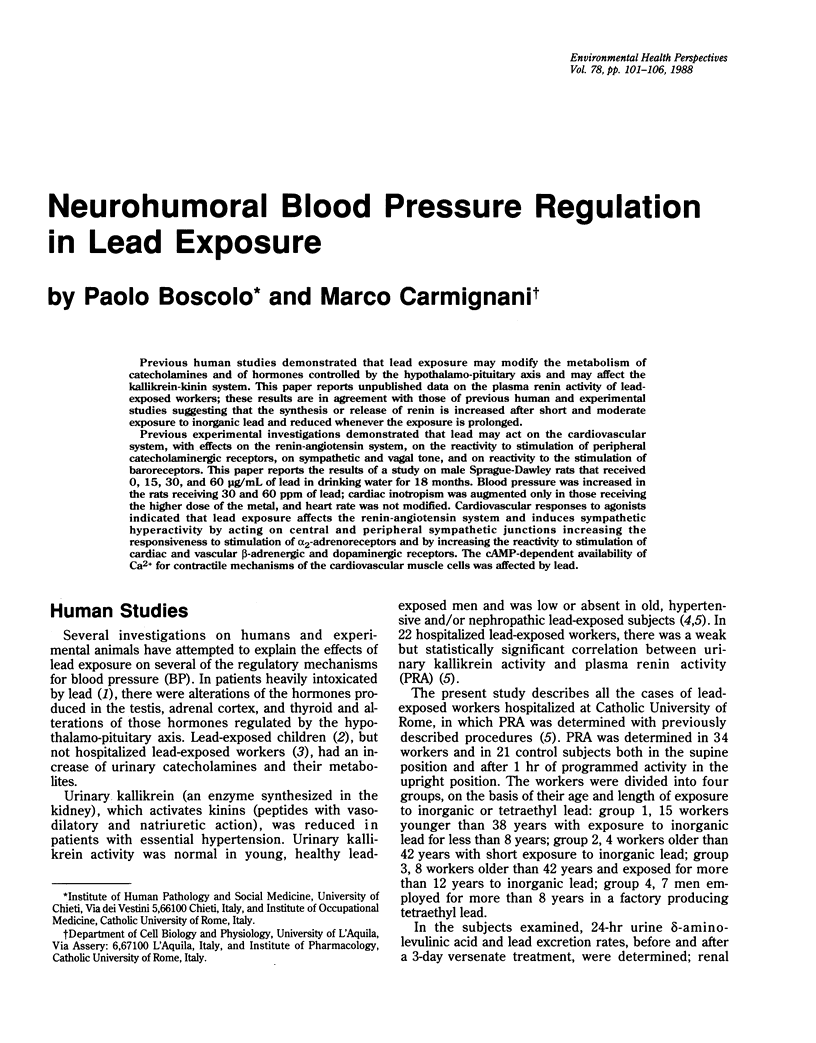
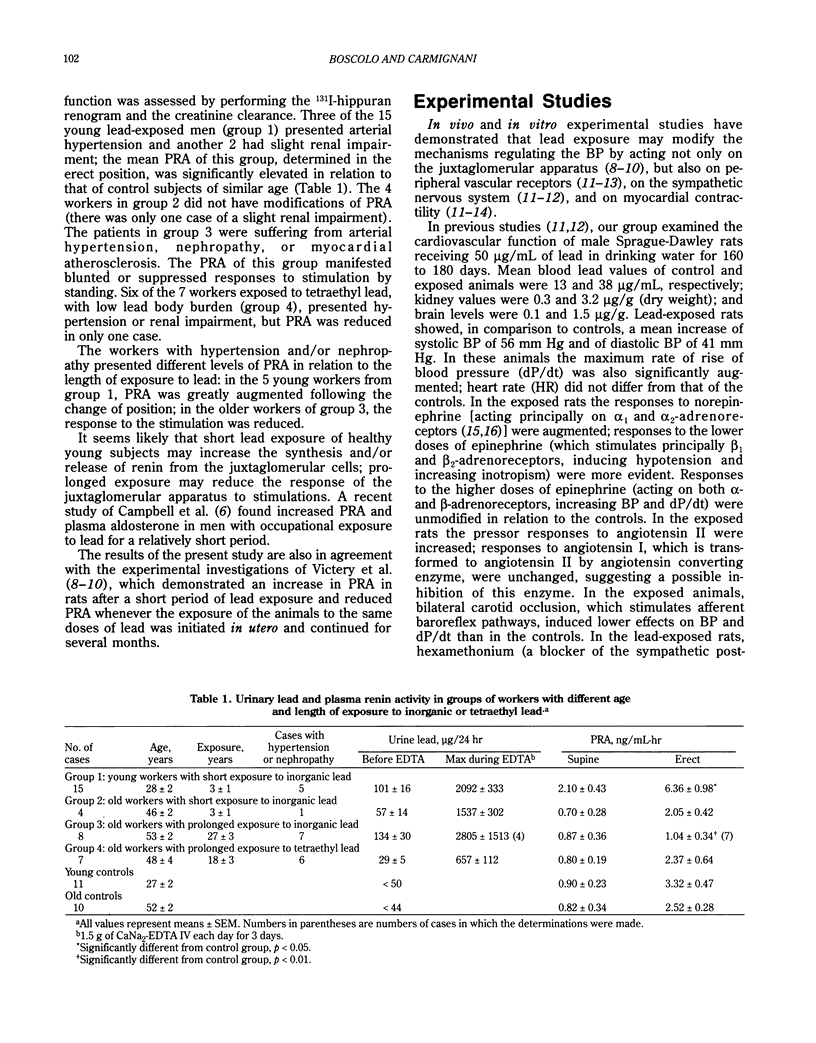
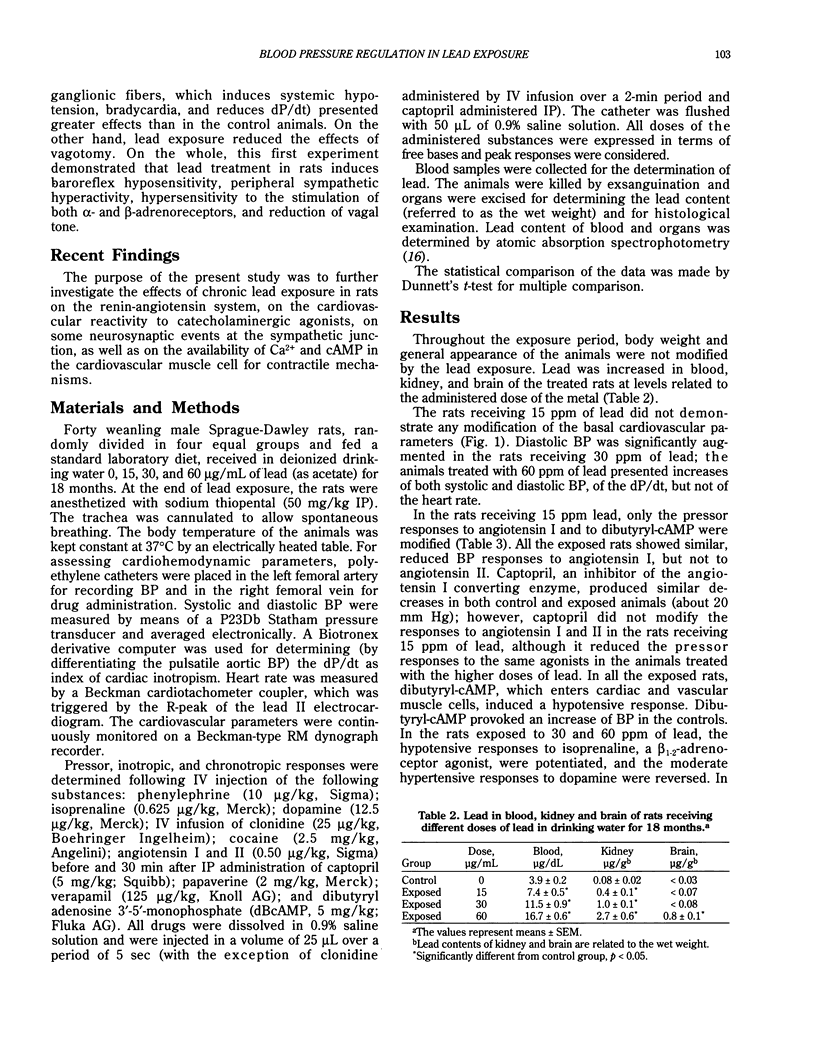
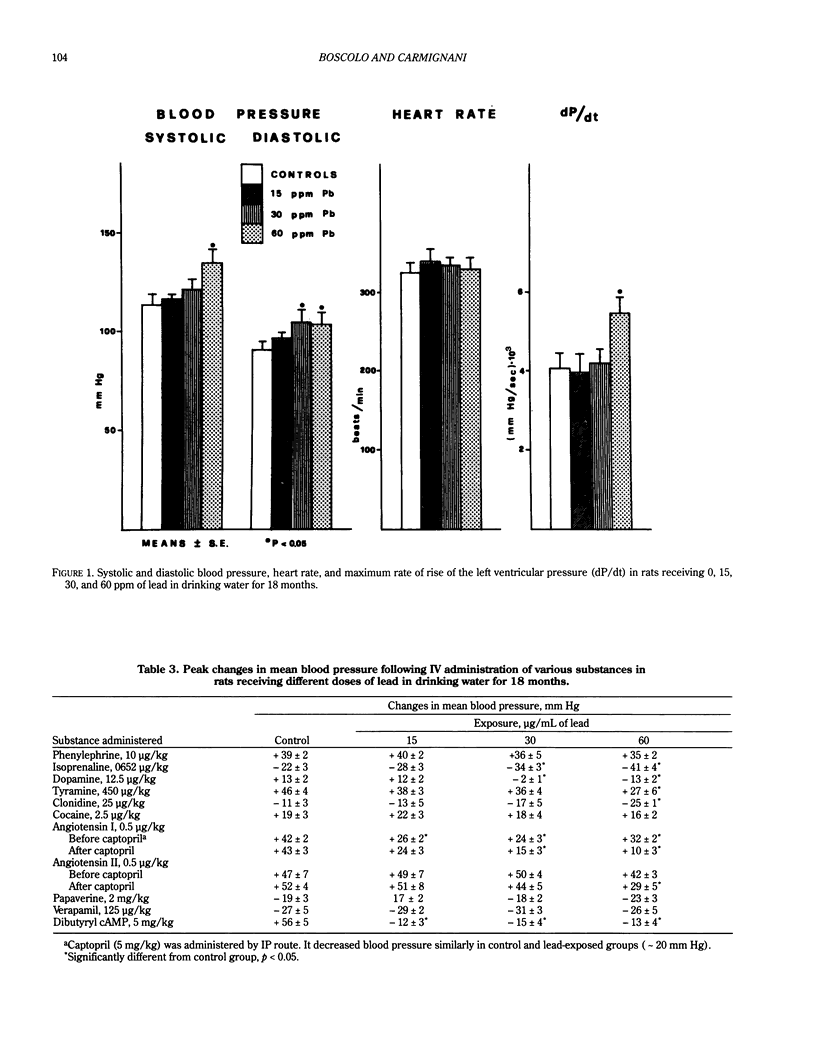
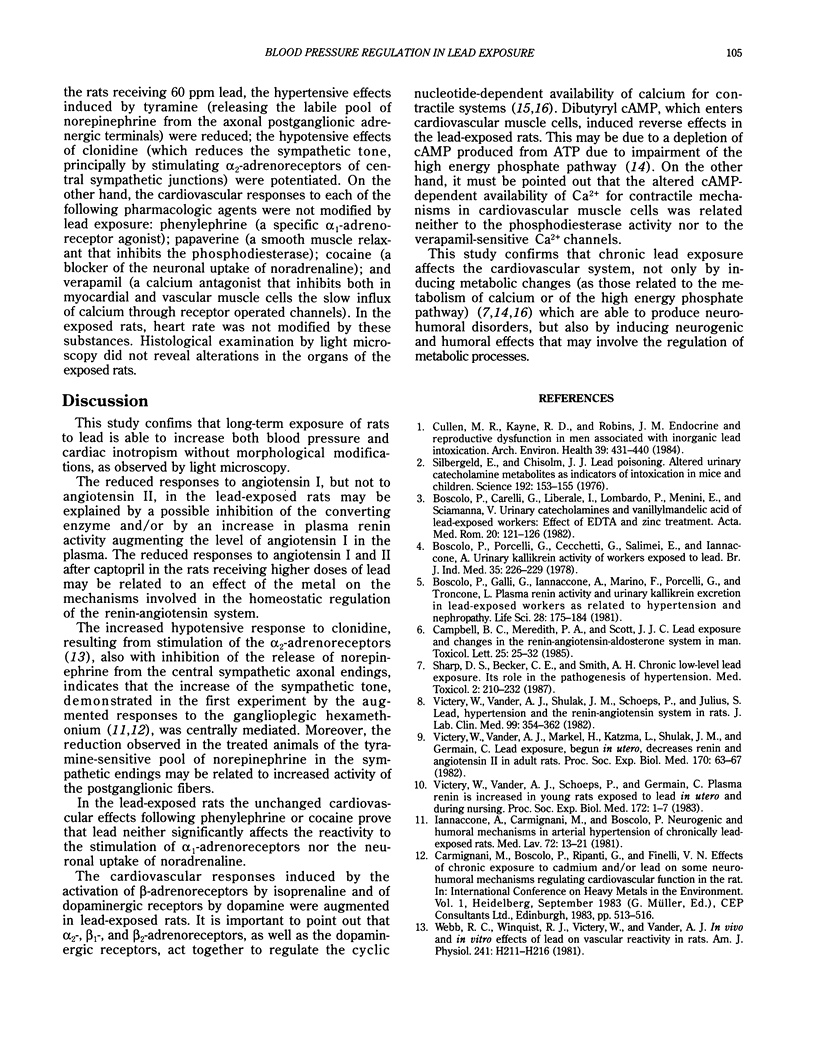

Selected References
These references are in PubMed. This may not be the complete list of references from this article.
- Boscolo P., Galli G., Iannaccone A., Martino F., Porcelli G., Troncone L. Plasma renin activity and urinary kallikrein excretion in lead-exposed workers as related to hypertension and nephropathy. Life Sci. 1981 Jan 12;28(2):175–184. doi: 10.1016/0024-3205(81)90550-6. [DOI] [PubMed] [Google Scholar]
- Boscolo P., Porcelli G., Cecchetti G., Salimei E., Iannaccone A. Urinary kallikrein activity of workers exposed to lead. Br J Ind Med. 1978 Aug;35(3):226–229. doi: 10.1136/oem.35.3.226. [DOI] [PMC free article] [PubMed] [Google Scholar]
- Campbell B. C., Meredith P. A., Scott J. J. Lead exposure and changes in the renin-angiotensin-aldosterone system in man. Toxicol Lett. 1985 Apr;25(1):25–32. doi: 10.1016/0378-4274(85)90096-7. [DOI] [PubMed] [Google Scholar]
- Churchill P. C. Second messengers in renin secretion. Am J Physiol. 1985 Aug;249(2 Pt 2):F175–F184. doi: 10.1152/ajprenal.1985.249.2.F175. [DOI] [PubMed] [Google Scholar]
- Cullen M. R., Kayne R. D., Robins J. M. Endocrine and reproductive dysfunction in men associated with occupational inorganic lead intoxication. Arch Environ Health. 1984 Nov-Dec;39(6):431–440. doi: 10.1080/00039896.1984.10545877. [DOI] [PubMed] [Google Scholar]
- Iannaccone A., Carmignani M., Boscolo P. Neurogenic and humoral mechanisms in arterial hypertension of chronically lead-exposed rats. Med Lav. 1981 Jan-Feb;72(1):13–21. [PubMed] [Google Scholar]
- Kopp S. J., Bárány M., Erlanger M., Perry E. F., Perry H. M., Jr The influence of chronic low-level cadmium and/or lead feeding on myocardial contractility related to phosphorylation of cardiac myofibrillar proteins. Toxicol Appl Pharmacol. 1980 Jun 15;54(1):48–56. doi: 10.1016/0041-008x(80)90007-1. [DOI] [PubMed] [Google Scholar]
- Selander S., Cramér K. Determination of lead in blood by atomic absorption spectrophotometry. Br J Ind Med. 1968 Jul;25(3):209–213. doi: 10.1136/oem.25.3.209. [DOI] [PMC free article] [PubMed] [Google Scholar]
- Sharp D. S., Becker C. E., Smith A. H. Chronic low-level lead exposure. Its role in the pathogenesis of hypertension. Med Toxicol. 1987 May-Jun;2(3):210–232. doi: 10.1007/BF03259865. [DOI] [PubMed] [Google Scholar]
- Silbergeld E. K., Chisolm J. J., Jr Lead poisoning: altered urinary catecholamine metabolites as indicators of intoxication in mice and children. Science. 1976 Apr 9;192(4235):153–155. doi: 10.1126/science.1257763. [DOI] [PubMed] [Google Scholar]
- Victery W., Vander A. J., Markel H., Katzman L., Shulak J. M., Germain C. Lead exposure, begun in utero, decreases renin and angiotensin II in adult rats. Proc Soc Exp Biol Med. 1982 May;170(1):63–67. doi: 10.3181/00379727-170-41398. [DOI] [PubMed] [Google Scholar]
- Victery W., Vander A. J., Shulak J. M., Schoeps P., Julius S. Lead, hypertension, and the renin-angiotensin system in rats. J Lab Clin Med. 1982 Mar;99(3):354–362. [PubMed] [Google Scholar]
- Webb R. C., Winquist R. J., Victery W., Vander A. J. In vivo and in vitro effects of lead on vascular reactivity in rats. Am J Physiol. 1981 Aug;241(2):H211–H216. doi: 10.1152/ajpheart.1981.241.2.H211. [DOI] [PubMed] [Google Scholar]


